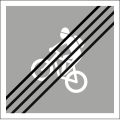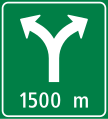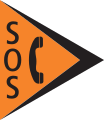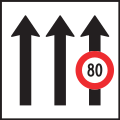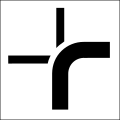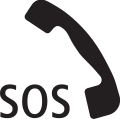Дорожные знаки в Швейцарии и Лихтенштейне
Дорожные знаки в Швейцарии и Лихтенштейне в целом соответствуют Венской конвенции о дорожных знаках и сигналах 1968 года . [1]

Хотя Швейцария не является членом Европейского союза , ее дорожные знаки в значительной степени следуют общеевропейским конвенциям, касающимся использования формы и цвета для обозначения их функции. Швейцария подписала Венскую конвенцию о дорожных знаках и сигналах 8 ноября 1968 года и ратифицировала ее 11 декабря 1991 года. [2] 2 марта 2020 года Лихтенштейн присоединился к Конвенции.
Регулирование
Швейцарские дорожные знаки определены в Законе о дорожных знаках , который основан на нескольких законах и постановлениях. Лихтенштейн в значительной степени следует законодательству Швейцарии. Основным законом для дорожных знаков в Швейцарии является Закон о дорожных знаках ( нем . Signalisationsverordnung (SSV) , фр . Ordonnance du sur la signalisation routière (OSR) , ит . Ordinanza sulla segnaletica stradale (OSStr) ). [3] В Лихтенштейне это Постановление о дорожной сигнализации ( нем . Strassensignalisationsverordnung (SSV) ). [4]
В Швейцарии каждый кантон несет ответственность за управление и размещение своих дорожных знаков и дополнительных панелей, и они используют тот из четырех официальных языков Швейцарии , который им подходит. В Лихтенштейне используется немецкий язык.
Расстояния и другие измерения во всех случаях отображаются в метрических единицах.
В 2003 году шрифт ASTRA-Frutiger заменил шрифт SNV , который до сих пор используется в Лихтенштейне. [5] [6]
Предупреждающие знаки
- 1.01 Наклон вправо
- 1.02 Наклон влево
- 1.03 Двойной поворот, первый поворот направо
- 1.04 Двойной поворот, первый налево
- 1.05 Скользкая дорога [примечание 1]
- 1.06 Неровная дорога
- 1.07 Дорога сужается с обеих сторон [примечание 2]
- 1.08 Дорога сужается справа
- 1.09 Дорога сужается слева
- 1.10 Крутой уклон вниз
- 1.11 Крутой подъем вверх
- 1.12 Щебень
- 1.13а Опасность падения камней справа
- 1.13б Опасность падения камней слева
- 1.14 Дорожные работы
- 1.15 Железнодорожный переезд со шлагбаумом или воротами [примечание 3]
- 1.16 Железнодорожный переезд без шлагбаума или шлагбаума [примечание 3]
- 1.18 Трамвай (только Швейцария) [примечание 4]
- 1.22 Впереди пешеходный переход [примечание 5]
- 1.23 Наличие детей
- 1.24 Пересечение дикими животными
- 1.25 Животные на дороге
- 1.25 Животные на дороге
- 1.26 Встречный транспорт
- 1.27 Светофоры
- 1.30 Другая опасность [примечание 6]
- 1.31 Заторы
- 1.32 Движение велосипедистов/переход
Регулирующие знаки
Запреты
- 2.01 Запрет на движение всех видов транспорта в обоих направлениях
- 2.02 Движение транспорта запрещено
- 2.03 Запрет на движение моторизованных транспортных средств (на трех и более колесах, за исключением одиночных мотоциклов, мопедов и велосипедов)
- 2.04 Запрет на мотоциклы
- 2.05 Запрет на велосипеды и мопеды
- 2.06 Запрет мопедов
- 2.07 Запрет на движение крупногабаритных грузовых транспортных средств (общая масса которых превышает 3,5 т)
- 2.08 Запрет автобусов
- 2.09 Запрет на прицепы (любого типа, за исключением сельскохозяйственных прицепов)
- 2.09.1 Запрет на прицепы, за исключением седельных и центрально-осевых прицепов
- 2.10.1 Запрет на движение транспортных средств, перевозящих опасные грузы
- 2.11 Запрет на транспортные средства, перевозящие загрязняющие воду вещества
- 2.12 Запрет на животных
- 2.13 Запрет на движение автотранспортных средств и мотоциклов
- 2.14 Запрет на движение автотранспортных средств, мотоциклов и мопедов
- 2.15 Запрет на движение пешеходов [примечание 7]
- 2.15.1 Запрет на катание на лыжах
- 2.15.2 Запрет на катание на санях
- 2.15.3 Запрет на любые виды транспортных средств (например, роликовые коньки, самокаты, скейтборды и т. д.)
- 2.16 Максимальный вес (ограничение веса брутто)
- 2.17 Нагрузка на ось (верхний предел, оси, расположенные на расстоянии менее 1 метра друг от друга, считаются одной осью)
- 2.18 Максимальная ширина
- 2.19 Максимальная высота
- 2.20 Максимальная длина (общая длина, включая прицепы)
Обязательные инструкции
- 2.30 Максимально допустимая скорость
- 2.30.1 Общепринятое ограничение скорости в густонаселенных районах; немецкий вариант
- 2.30.1 Французский вариант
- 2.30.1 Итальянский вариант
- 2.30.1 Ретороманский вариант
- 2.31 Минимальное ограничение скорости
- 2.32 Необходимо повернуть направо
- 2.33 Необходимо повернуть налево
- 2.34 Объезжайте препятствие с правой стороны
- 2.35 Объезжайте препятствие с левой стороны
- 2.36 Необходимо продолжать движение прямо
- 2.37 Необходимо повернуть направо (на автомагистралях: необходимо перестроиться на правую дорогу)
- 2.38 Необходимо повернуть налево (на автомагистралях: необходимо перестроиться на левую дорогу)
- 2.39 Необходимо повернуть направо или налево
- 2.40 Необходимо продолжить движение прямо или повернуть направо.
- 2.41 Необходимо продолжить движение прямо или повернуть налево.
- 2.41.1 Кольцевое движение
- 2.41.2 Обязательное направление для транспортных средств с опасными грузами
- 2.42 Поворот направо запрещен
- 2.43 Поворот налево запрещен
- 2.44 Обгон запрещен
- 2.45 Обгон грузовых автомобилей запрещен
- 2.46 Развороты запрещены [примечание 8]
- 2.47 Минимальное расстояние между крупногабаритными грузовыми автомобилями [примечание 8]
- 2.48 Требуются цепи противоскольжения
- 2.49 Остановка запрещена [примечание 9]
- 2.50 Парковка запрещена [примечание 10]
- 2.51 Таможня [примечание 11]
- 2.51 Вариант на латинском языке
- 2.52 Полиция - должна остановиться
- 2.52 Вариант на латинском языке
- 2.53 Конец ограничения максимальной скорости
- 2.53.1 Конец общедопустимого ограничения скорости – немецкий вариант
- 2.53.1 Французский вариант
- 2.53.1 Итальянский вариант
- 2.53.1 Романшский вариант
- 2.54 Конец минимальной скорости
- 2.55 Конец запрета на обгон
- 2.56 Отмена запрета на обгон грузовыми автомобилями
- 2.56.1 Окончание части запрета, например, для грузовиков или автобусов (на полосах)
- 2.57 Требования к окончанию цепей противоскольжения
- 2.58 Окончание предыдущего ограничения(ий)
- 2.59.1a Начало участка с ограничением скорости 30 км/ч
- 2.59.1e Начало зоны с общепринятыми ограничениями на парковку (здесь с применимыми временными ограничениями; итальянский вариант)
- 2.59.1c Начало парковочной зоны
- 2.59.2a Конец зоны с определенным ограничением скорости
- 2.59.2e Конец области с общепринятыми ограничениями на парковку (итальянский вариант)
- 2.59.2c Конец парковочной зоны
- 2.59.3b Только начало пешеходной зоны (итальянский вариант) [примечание 7] [примечание 12]
- 2.59.4b Конец пешеходной зоны (итальянский вариант)
- 2.59.5a Начало домашней зоны [примечание 13]
- 2.59.6a Конец домашней зоны
- 2.60 Велосипедная дорожка (также относится к мопедам)
- 2.60.1 Конец велосипедной дорожки
- 2.61 Пешеходная дорожка
- 2.62 Дорога для верховой езды
- 2.63 Обособленная и обязательная велосипедная полоса слева и пешеходная полоса справа
- 2.63.1 Общая велосипедная и пешеходная дорожка
- 2.64 Эксклюзивная полоса для общественного транспорта
- 2.65 Обязательные электрические указатели над полосами движения (заблокированная полоса, открытая полоса, перестроение на полосу справа)
Знаки приоритета
- 3.01 Стоп [примечание 14]
- 3.02 Нет приоритета/уступите дорогу [примечание 15]
- 3.03 Главная дорога с приоритетом [примечание 16]
- 3.04 Конец главной дороги
- 3.05 Пересечение дороги без приоритета
- 3.06 Перекресток с приоритетом справа
- 3.09 Уступите дорогу встречному транспорту
- 3.10 Приоритет по отношению к встречному транспорту
- 3.20 Железнодорожный переезд с двойными мигающими огнями
- 3.21 Железнодорожный переезд с одиночным мигающим огнем
- 3.22 Расположение железнодорожного переезда
- 3.24 Расположение железнодорожного переезда
Указательные знаки
Проведение индикации знаков
- 4.01 Автомагистраль
- 4.02 Конец автомагистрали
- 4.04 Конец скоростной автомагистрали
- 4.05 Горная почтовая дорога [примечание 17]
- 4.06 Конец горной почтовой дороги
- 4.07 Туннель [примечание 18]
- 4.07a Впереди туннель с указанием расстояния до входа в туннель
- 4.08.1 Улица с односторонним движением и встречным велосипедным движением
- 4.09 Тупик
- 4.09.1 Тупики с исключениями (для велосипедистов и пешеходов)
- 4.10 Водоохранная зона
- 4.11 Расположение пешеходного перехода
- 4.12 Подземный пешеходный переход (обязательно)
- 4.13 Пешеходный переход (обязательно)
- 4.14 Больница [примечание 19]
- 4.15 Место раздачи
- 4.16 Место разборки аварийных транспортных средств [примечание 20]
- 4.17 Парковка разрешена [примечание 21]
- 4.18 Парковка с парковочным диском
- 4.20 Платная парковка
- 4.21 Парковка
- 4.22 Расстояние и направление к парковке
- 4.23 Расстояние и направление для отдельных видов транспортных средств
- 4.24 Полоса эвакуации
- 4.25 Парковка и перехват
- 4.25 Крытая перехватывающая парковка
- 4.25 Перехватывающая парковка с доступом к поезду
- ... с доступом к трамваю
- ... с доступом к автобусу
Знаки указания маршрута
- 4.27 Въезд в город/деревню по главной дороге
- 4.27 Въезд в город/деревню на главной дороге в Лихтенштейне
- 4.28 Конец города/деревни на главной дороге [примечание 22]
- 4.28 Конец города/деревни на главной дороге в Лихтенштейне
- 4.29 Въезд в город/деревню по второстепенной дороге [примечание 23]
- 4.29 Въезд в город/деревню по второстепенной дороге в Лихтенштейне
- 4.30 Конец города/деревни на второстепенной дороге [примечание 22]
- 4.30 Конец города/деревни на второстепенной дороге в Лихтенштейне
- 4.31 Указатель к месту назначения по автомагистрали/скоростному маршруту
- 4.32 Указатель к месту назначения по главному маршруту
- 4.33 Указатель к месту назначения по второстепенному маршруту
- 4.34 Объезд к месту назначения, которому необходимо следовать
- 4.34.1 (Текущий) объезд (для всех направлений)
- 4.35 Указатель в виде таблицы (указывающий направление на Цюрих по главному маршруту, на Базель по автомагистрали/скоростной автомагистрали и на Люцерн по второстепенному маршруту)
- 4.36 Объявление о перекрестке на главной дороге или на второстепенной дороге, соединяющей главные дороги
- 4.37 Объявление о перекрестке на второстепенной дороге
- 4.38 Объявление о перекрестке на главной дороге с двумя полосами движения
- 4.39 Объявление о перекрестке на второстепенной дороге с двумя разделенными полосами движения
- 4.40 Объявление о перекрестке на главной дороге с ограничением для левого маршрута (здесь: максимальная ширина)
- 4.41 Маршрутизация полос на главной дороге
- 4.42 Маршрутизация полос на второстепенной дороге
- 4.45 Указатель для определенных типов транспортных средств (здесь: грузовые автомобили) [примечание 24]
- 4.46 Указатель на парковочное место [примечание 25]
- 4.46.1 Указатель на парковку и перехватывающую парковку
- 4.47 Указатель на кемпинг
- 4.48 Указатель на стоянку караванов
- 4.49 Указатель на предприятие, выставки и т.п. (обычно встречается в промышленных зонах)
- 4.50.1 Рекомендуемая дорожка для велосипедистов
- 4.50.3 Рекомендуемая трасса для горных велосипедов
- 4.50.4 Рекомендуемый путь для транспортных средств, подобных транспортным средствам, таким как роликовые коньки, самокаты, скейтборды и т. д.
- 4.50.5 Указатель, указывающий направление для определенного типа (здесь для велосипедов)
- 4.50.6 Указатель направления для разных типов
- 4.51.1 Указатель направления для конкретного названного/пронумерованного маршрута
- 4.51.1 Информация о маршруте для велосипедной дорожки
- 4.51.1 Информация о маршруте для горного велосипеда
- 4.51.2 Объявление о повороте для определенного типа (здесь: транспортные средства, подобные транспортным средствам)
- 4.51.4 Конечный маршрут определенного типа (здесь для маршрута для горного велосипеда)
- 4.52 Информация о маршрутизации
- 4.53 Объявление объезда
- 4.54 Объявление о кольцевой развязке на главной дороге
- 4.55 Объявление о разветвлении дороги с опасной ситуацией или ограничениями (здесь: боковая дорога слева в 50 м впереди с предупреждением о наличии переезда со шлагбаумом сразу за поворотом)
Нумерация
- 4.57 Номер главной дороги
- 4.59 Количество выходов
- 4.59.1 Количество перекрестков
Автомагистрали и скоростные автомагистрали
- 4.60 Первое объявление о следующем выходе
- 4.61 Второе объявление о следующем выходе
- 4.62 Начало выхода
- 4.63 Знак выхода (на немецком языке)
- 4.63 Знак выхода (на французском)
- 4.63 Знак выхода (на итальянском)
- 4.64 Соединительная плата
- 4.65 Дистанционная доска
- 4.66 Объявление о перекрестке
- 4.67 Первая информация о перекрестке впереди
- 4.68 Вторая информация о перекрестке впереди
- 4.69 Информация о маршруте над полосой
- 4.70 Направление к следующему столбу экстренного вызова
- 4.71 Расстояние до полицейского участка (на немецком языке)
- 4.71 Расстояние до полицейского участка (на французском)
- 4.71 Расстояние до полицейского участка (на итальянском)
- 4.72 Знак километра
- 4.73 Знак гектометра
- 4.75 Информация о состоянии дорог на перевалах и горнолыжных курортах
- 4.76 Предварительная информация о состоянии дорог и требованиях определенных пунктов назначения
- 4.77 Информация о маршрутизации полос (сокращение с трех до двух полос – две полосы справа присоединяются к одной полосе – левая полоса выводится на другую сторону автомагистрали)
- 4.77.1 Полоса с ограничением (здесь: ограничение максимальной скорости)
- 4.77.2 Разрешено использование твердой обочины
Информационные знаки
- 4.79 Кемпинг
- 4.80 Место для каравана
- 4.81 Телефон
- 4.82 Первая помощь
- 4.83 Помощь на дороге
- 4.84 Бензиновая/автозаправочная станция (часто добавляются панели 5.01 и/или 5.17)
- 4.85 Отель-Мотель
- 4.86 Ресторан
- 4.87 Прохладительные напитки
- 4.88 Информационный центр
- 4.89 Молодежное общежитие
- 4.90 Местная радиоинформация с частотой МГц для информации о состоянии дорог и дорожном движении
- 4.91 Церковные службы (здесь: ретороманский вариант)
- 4.92 Огнетушитель
- 4.93 Общепринятые ограничения скорости для различных категорий дорог в Швейцарии
- 4.94 Расстояния до аварийных выходов
- 4.95 Аварийный выход
Дополнительные панели
Все знаки могут сочетаться с 1 или более дополнительными панелями. Если дополнительная панель сопровождается словами ausgenommen / excepté / eccettuato (исключая) или gestattet / autorisé / permesso (разрешено), это означает, что указанный вид транспорта (например, велосипеды (панель 5.31) или цистерны (панель 5.37)) исключен из регулирования основного знака.
Панель 5.31 для велосипедов распространяется также на мопеды с расчетной максимальной скоростью 20 км/ч.
- Дополнительные панели общего назначения
- 5.01 Расстояние (на которое распространяется значение знака)
- 5.02 Расстояние и направление
- 5.03 Диапазон действия (диапазон, в котором опасность, регулирование, ограничение или указание действительны)
- 5.04 Повторение (уже действующего правила, ограничения или указания; продолжается до и после знака)
- 5.05 Панель старта (указывает на начало регулирования для статического трафика)
- 5.06 Конечная панель (указывает на конец правила для статического движения)
- 5.07 Указатель поворота
- Дополнительные панели для особых знаков
- 5.09 Указание маршрута главной дороги (дороги с приоритетом)
- 5.10 Указывает исключения из запрета остановки
- 5.11 Указывает исключения из запрета на парковку
- 5.12 Turn signal (Switzerland only)
- 5.13 Black ice on road (or slippery snow on road)
- 5.14 Handicapped people
- 5.15 Width of lane/road
- 5.16 Shooting noise
- 5.17 Distance to second next petrol/gas station (Switzerland only)
- Kinds of transport means
- 5.20 Light motor cars
- 5.21 Heavy motor cars
- 5.22 Large goods vehicles (lorries; total weight is larger than 3.5 t)
- 5.23 Lorries with trailer
- 5.24 Articulated lorries
- 5.25 Bus
- 5.26 Trailer
- 5.27 Caravan/Living trailer
- 5.28 Mobile motor home
- 5.29 Motor bikes
- 5.30 Mopeds
- 5.31 Bicycle
- 5.32 Mountain bikes
- 5.33 Bicycle pushing
- 5.34 Pedestrians
- 5.35 Trams or streetways
- 5.36 Tractors
- 5.37 Tanks
- 5.38 Groomers
- 5.39 Cross-country skiing
- 5.40 Skiing
- 5.41 Sledging
- 5.50 Airplanes/Airfield
- 5.51 Car transfer on train (Switzerland only)
- 5.52 Car transfer on ferry (Switzerland only)
- Special panels
- 5.53 Industrial and commercial area
- 5.54 Customs declaration only with Sichtdeklaration / dédouanement à vue / dichiarazione a vista (combined with 2.01 on lanes: only for vehicles of this type)
- 5.55 S-Traffic (combined with the term ausgenommen / Excepté / eccettuato (excluding) and below the sign 2.07 indicates an exception for vehicles with corresponding signs attached to them)
- 5.56 Hospital with emergency department (emergency department open 24 hours)
- 5.57 Emergency phone
- 5.58 Fire extinguisher
Road markings
A number of road markings are used in Switzerland and Liechtenstein. The road markings themselves give instructions to drivers, but they may at times also be accompanied by signs giving the same or additional instructions.
 | 6.01 Security strip (white, solid) | Designates centre of carriageway or border of lanes. Crossing, traversing, or passing over it by vehicles is not permitted. |
 | 6.02 Double security strip (white, solid) | Separates driving directions on roads with 3 or more lanes (or expressways). Crossing, traversing, or passing over it by vehicles is not permitted. |
| 6.03 Directing strip (white, broken) | Designates either centre of carriageway on two-lane roads, or separates lanes. Crossing, traversing, passing over for overtaking is allowed. | |
 | 6.04 Double strip (combination of a security strip and a directing strip on either side of the security strip) | Crossing, passing, or traversing, or starting an overtaking manoeuvre, is allowed only from the side with the broken directing strip. |
 | 6.05 Advance warning strip (white, closely broken) | Announces either security or double strips. Any overtaking manoeuvres must be completed. |
 | 6.06 Pre-selecting arrows (white) | Indicates permitted manoeuvres from each lane for a junction; the chosen direction is compulsory (corresponds to 2.31–2.36, see also 4.43). Yellow arrows indicate directions for public transport only and their permitted manoeuvres can differ. |
 | 6.07 Pull arrows (white, arranged obliquely) | Orders to leave the lane in the indicated direction. |
 | 6.08 Bus lane (yellow, solid or broken strips; BUS text in yellow) | Indicates lanes exclusive to public transport. Any exceptions to this may be indicated with the use of supplementary panels under sign 2.64. It is permitted to cross the line if the yellow strip is broken. |
 | 6.10 Stop line (white, wide, solid) | Traffic must stop at this line. Always accompanied by a stop sign. It may also be used at traffic lights (though traffic need not stop when the light is green), level crossings and on lanes for turn off traffic. Stop lines are yellow if exclusively addressed to bicycles and mopeds (e.g. on bicycle paths and lanes; see also 6.26) |
| 6.11 Stop text (white) | May appear alongside a stop line | |
| 6.12 Longitudinal strip (white, solid) | May appear alongside a stop line | |
 | ||
| 6.13 Give way line (white, small triangles in a row) | Traffic must give way at this line. Always accompanied by a give way sign. Can be combined with traffic lights (though traffic need not stop while traffic lights are working. Give way lines are yellow if exclusively addressed to bicycles and mopeds (e.g. on bicycle paths and lanes) | |
| 6.14 Announcement of give way line (white, large triangle) | May announce the give way line on main roads and important minor roads | |
 | 6.15 Border strip (white, solid) | Designates the edge of a carriageway |
| 6.16 Guidestrip (white, broken) | Visually guides traffic through a junction. They may continue stop or waiting lines, separating the side road from the main road (see example 1), or indicate the course of the principal road in cases of a turn in the principal road at a crossing (see example 2). Guidestrips do not appear on side roads with valid priority to the right rule. | |
 | Example 1 | |
 | Example 2 | |
 | 6.17 Pedestrian crossing (longitudinal, wide, yellow; on cobble stones if need be white) | |
| 6.18 Prohibition of stopping strip | Stopping voluntarily is prohibited. | |
 | 6.19 Pedestrian area (yellow, two longitudinal strips on each side connected by bias bindings) | Area marked on roads for use by pedestrians only |
 | 6.20 Restricted area (white, shaded and framed) | Visually guides traffic; crossing, traversing, or passing is strictly prohibited. |
 | 6.21 Zigzag lines (yellow) | Designate public bus stop area. Parking is prohibited. It can be used to pick up or drop off passengers, but only if public traffic is in no way obstructed. |
 | 6.22 Prohibition of parking strip (yellow, longitudinal strip broken with diagonal crosses) | |
 | 6.23 Prohibition of parking area (yellow, framed, diagonally crossed) | Exclusive parking for designated traffic users, indicated by the word TAXI or a license plate number. If labelled, it can be used to pick up or drop off passengers, but only if valid traffic user is in no way obstructed. |
 | Parking (usually marked by white, blue, red, or yellow solid strips) | Parking spaces can be signposted (see 4.17–4.21) and/or marked by white (parking free, unless signposted with 4.20; or 4.18), blue, or red solid strips (sometimes only indicated by partial markings); blue markings indicate Blue Zone parking spaces with mandatory use of parking disc/card; red markings indicate Red Zone parking spaces (exist only in a few cantons); yellow parking spaces are reserved for private or special purposes (prohibited to the general public). In areas with parking markings, it is prohibited to park anywhere else; only parking spaces of appropriate size for the relevant vehicle type, whether bicycle/moped, motorbike, car, bus (indicated by word CAR) or lorries should be used. Blue Zones can be indicated by a thick white-blue crossline at the start and a thick blue-white crossline at the end of the zone. |
 | 6.25 Prohibition of stopping strip (yellow, longitudinal solid strip with endings) | Voluntarily stopping is prohibited |
 | 6.26 Extended bicycle lane (waiting area placed in front of stop line with an additional yellow stop line and a bicycle icon in front of the white stop line) | During red traffic light bicycles and mopeds are allowed to wait in front of first motor vehicle and next to each other, motor vehicles must stop in front of the white stop line; when traffic light becomes green, motor vehicles must show patience and give way to bicycles and mopeds in front of them in order to let them clear the crossing first. |
 | 6.30 Guide post, right | Placed on the right-hand side of the carriageway, facing the driver on the right. It can also appear on the left-hand side of the carriageway on roads with either separated directions or without oncoming traffic. |
 | 6.31 Guide post, left | Placed on the left-hand side of the carriageway, facing the driver on the right. |
Traffic lights
Working traffic light signals (not turned off or not flashing yellow) take precedence over priority signs, road markings, and general road rules. A yellow flashing traffic light signals a need for special caution, and the general road rules, priority signs, and road markings must be applied and followed (including in particular stop signs or give way signs and all other priority signs, as well as direction indications). White traffic lights are addressed to public transport only.
Traffic signals containing direction indications apply only for the (lane with) corresponding direction(s) – traffic is required to follow the indicated direction. All traffic light rules apply to bicycles and mopeds as well, but can be exclusively addressed to them by showing a bicycle icon.
Police instruction signs
Blue Zone parking disc
When parking in a Blue Zone, it is mandatory to set and display a blue parking disc with the time of arrival according to the Blue Zone Rules. Parking in a blue zone space is limited to 1 hour unless otherwise indicated. No part of a parked vehicle, including bumpers, may protrude outside the marked parking space.
Blue disks are available in various places, such as police stations, hotels, tourist offices, newsstands, the local Gemeinde/Town hall, garages and gas stations.
Blue Zone Parking Rules
From Monday to Saturday
The disc must be set to the exact time, or to the next half-hour mark if the exact time is not printed on the disc.
| Hour slots | Parking allowed |
|---|---|
| 8:00 to 11:30 a.m. | For 1 hour after set time |
| 11:00 a.m. to 1:30 p.m. | Until 2:30 p.m. |
| 1:30 to 6:00 p.m. | For 1 hour after set time |
| 6:00 to 7:00 p.m. | Until 9:00 the next morning |
| 7:00 p.m. to 7:59 a.m. | Blue disc not needed if vehicle removed by 8:00 a.m. |
From 6:00 p.m. Saturday to 9:00 a.m. Monday, blue-zone parking is free and no blue disc is needed.
In blue zones marked with a 4-digit area code, parking is free for those with a valid parking permit for that specific area code. For those without the corresponding parking permit, regular Blue Zone parking rules apply.
See also
Notes
- ^ Panel 5.13 can be added, if there is black ice or slippery snow on road.
- ^ Panel 5.15 can be added to indicate the width of the lane/road.
- ^ a b Panel 5.12 can be added, if regulated by turn signals.
- ^ In Chur, warning of street-running trains.
- ^ Often panel 5.01 is added.
- ^ Additional information will be added below the sign, e.g. panel 5.16.
- ^ a b Includes any kind of vehicle-like transport means, e.g. rollerblades, skateboards, scooters, etc.
- ^ a b If valid for a distance, then additional length information is shown below the sign with panel 5.03.
- ^ Often panels 5.04, 5.05, 5.06, 5.07, or 5.10 are added.
- ^ Often panels 5.04, 5.05, 5.06, 5.07, or 5.11 are added.
- ^ Stop requested, except if no control is carried out, then speed limit is 20 km/h.
- ^ If driving is exceptionally allowed then pedestrians and users of vehicle-like transport means have priority
- ^ Pedestrians and users of vehicle-like transport means, such as rollerblades, scooters, skateboards, etc., are allowed to use the entire street and have priority; parking only allowed at designated places.
- ^ Panels 5.01 and/or 5.09 can be added.
- ^ Panels 5.01 and/or 5.09 can be added.
- ^ Panel 5.09 can be added.
- ^ Priority given to public transport, such as postal bus; pay special attention to the specific three-tone-horn of the postal bus approaching hairpin bends and wait before the bend; traffic users must follow instructions given by public transport drivers.
- ^ Length of tunnel can be indicated using sign 5.03.
- ^ Presence of hospital, rest home or similar. Traffic users must keep quiet, particularly during night time.
- ^ Panels 5.57 and 5.58 can be added.
- ^ Panel 5.14 can be added to indicate an exclusive parking space for handicapped people.
- ^ a b Mentions next village/town above the line and distance to next major place(s) below.)
- ^ After this sign, the generally valid speed limit within a densely built-up area automatically applies.
- ^ Often announced with panel 4.23.
- ^ Panels 5.20–5.32 can be added.
References
- ^ "Convention on Road Signs and Signals Vienna, 8 November 1968". United Nations. Archived from the original on 3 June 2012. Retrieved 1 September 2012.
- ^ "United Nations Treaty Collection". treaties.un.org. Retrieved 2023-11-18.
- ^ "SR 741.21 Signalisationsverordnung vom 5. September 1979 (SSV)" (in German, French, and Italian). Berne, Switzerland: Swiss Federal Council. Retrieved 2024-07-19.
- ^ "Strassensignalisationsverordnung (SSV) vom 27. Dezember 1979" (in German). Liechtensteinisches Landesgesetzblatt. Retrieved 2024-07-19.
- ^ rel (20 января 2003 г.). «Фрутигер» на Штрассе». НЗЗ (на немецком языке). Цюрих, Швейцария . Проверено 28 июня 2017 г.
- ^ "Frutiger удостоен награды SOTA". Microsoft Typography . Получено 1 сентября 2012 г.
Внешние ссылки
- Официальные швейцарские дорожные знаки
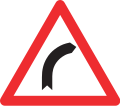


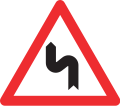
![1.05 Скользкая дорога[примечание 1]](http://upload.wikimedia.org/wikipedia/commons/thumb/1/17/CH-Gefahrensignal-Schleudergefahr.svg/120px-CH-Gefahrensignal-Schleudergefahr.svg.png)

![1.07 Дорога сужается с обеих сторон[примечание 2]](http://upload.wikimedia.org/wikipedia/commons/thumb/5/5d/CH-Gefahrensignal-Engpass.svg/120px-CH-Gefahrensignal-Engpass.svg.png)







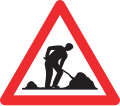
![1.15 Железнодорожный переезд со шлагбаумом или воротами[примечание 3]](http://upload.wikimedia.org/wikipedia/commons/thumb/6/6c/CH-Gefahrensignal-Schranken.svg/120px-CH-Gefahrensignal-Schranken.svg.png)
![1.16 Железнодорожный переезд без шлагбаума или шлагбаума[примечание 3]](http://upload.wikimedia.org/wikipedia/commons/thumb/9/9b/CH-Gefahrensignal-Bahnuebergang_ohne_Schranken.svg/120px-CH-Gefahrensignal-Bahnuebergang_ohne_Schranken.svg.png)
![1.18 Трамвай (только Швейцария)[примечание 4]](http://upload.wikimedia.org/wikipedia/commons/thumb/2/2c/CH-Gefahrensignal-Strassenbahn.svg/120px-CH-Gefahrensignal-Strassenbahn.svg.png)
![1.22 Впереди пешеходный переход[примечание 5]](http://upload.wikimedia.org/wikipedia/commons/thumb/a/ac/CH-Gefahrensignal-Fussgaengerstreifen.svg/120px-CH-Gefahrensignal-Fussgaengerstreifen.svg.png)





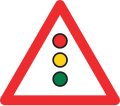
![1.30 Другая опасность[примечание 6]](http://upload.wikimedia.org/wikipedia/commons/thumb/9/98/CH-Gefahrensignal-andere_Gefahren.svg/120px-CH-Gefahrensignal-andere_Gefahren.svg.png)


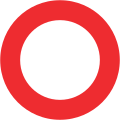
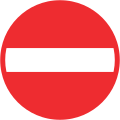


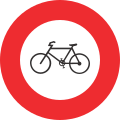


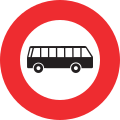


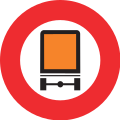




![2.15 Запрет на движение пешеходов[примечание 7]](http://upload.wikimedia.org/wikipedia/commons/thumb/9/92/CH-Vorschriftssignal-Verbot_f%C3%BCr_Fussg%C3%A4nger.svg/120px-CH-Vorschriftssignal-Verbot_f%C3%BCr_Fussg%C3%A4nger.svg.png)


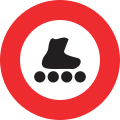


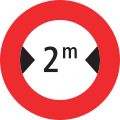

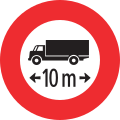
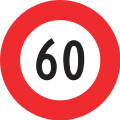

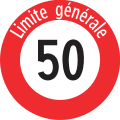


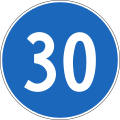









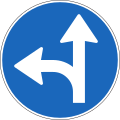






![2.46 Развороты запрещены[примечание 8]](http://upload.wikimedia.org/wikipedia/commons/thumb/3/39/CH-Vorschriftssignal-Wenden_verboten.svg/120px-CH-Vorschriftssignal-Wenden_verboten.svg.png)
![2.47 Минимальное расстояние между крупногабаритными грузовыми автомобилями[примечание 8]](http://upload.wikimedia.org/wikipedia/commons/thumb/8/80/CH-Vorschriftssignal-Mindestabstand.svg/120px-CH-Vorschriftssignal-Mindestabstand.svg.png)

![2.49 Остановка запрещена[примечание 9]](http://upload.wikimedia.org/wikipedia/commons/thumb/5/5a/CH-Vorschriftssignal-Halten_verboten.svg/120px-CH-Vorschriftssignal-Halten_verboten.svg.png)
![2.50 Парковка запрещена[примечание 10]](http://upload.wikimedia.org/wikipedia/commons/thumb/c/c1/CH-Vorschriftssignal-Parkieren_verboten.svg/120px-CH-Vorschriftssignal-Parkieren_verboten.svg.png)
![2.51 Таможня[примечание 11]](http://upload.wikimedia.org/wikipedia/commons/thumb/1/13/CH-Vorschriftssignal-Zollhaltestelle-1.svg/120px-CH-Vorschriftssignal-Zollhaltestelle-1.svg.png)

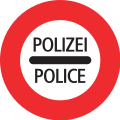









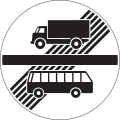
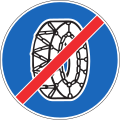







![2.59.3b Только начало пешеходной зоны (итальянский вариант)[примечание 7][примечание 12]](http://upload.wikimedia.org/wikipedia/commons/thumb/f/f8/CH-Vorschriftssignal-Fussg%C3%A4ngerzone-2.svg/86px-CH-Vorschriftssignal-Fussg%C3%A4ngerzone-2.svg.png)

![2.59.5a Начало домашней зоны[примечание 13]](http://upload.wikimedia.org/wikipedia/commons/thumb/9/9c/CH-Vorschriftssignal-Begegnungszone-1.svg/120px-CH-Vorschriftssignal-Begegnungszone-1.svg.png)


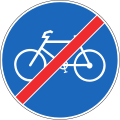
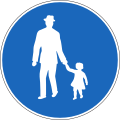
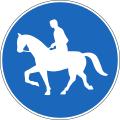


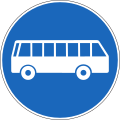

![3.01 Стоп[примечание 14]](http://upload.wikimedia.org/wikipedia/commons/thumb/c/c5/CH-Vortrittssignal-Stop.svg/120px-CH-Vortrittssignal-Stop.svg.png)
![3.02 Нет приоритета/уступите дорогу[примечание 15]](http://upload.wikimedia.org/wikipedia/commons/thumb/5/55/CH-Vortrittssignal-Kein_Vortritt.svg/120px-CH-Vortrittssignal-Kein_Vortritt.svg.png)
![3.03 Главная дорога с приоритетом[примечание 16]](http://upload.wikimedia.org/wikipedia/commons/thumb/f/f0/CH-Vortrittssignal-Hauptstrasse.svg/120px-CH-Vortrittssignal-Hauptstrasse.svg.png)













![4.05 Горная почтовая дорога[примечание 17]](http://upload.wikimedia.org/wikipedia/commons/thumb/7/7f/CH-Hinweissignal-Bergpoststrasse.svg/120px-CH-Hinweissignal-Bergpoststrasse.svg.png)
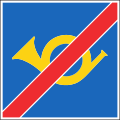
![4.07 Туннель[примечание 18]](http://upload.wikimedia.org/wikipedia/commons/thumb/9/93/CH-Hinweissignal-Tunnel.svg/86px-CH-Hinweissignal-Tunnel.svg.png)

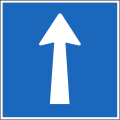







![4.14 Больница[примечание 19]](http://upload.wikimedia.org/wikipedia/commons/thumb/4/42/CH-Hinweissignal-Spital.svg/120px-CH-Hinweissignal-Spital.svg.png)

![4.16 Место разборки аварийных транспортных средств[примечание 20]](http://upload.wikimedia.org/wikipedia/commons/thumb/0/04/CH-Hinweissignal-Abstellplatz_f%C3%BCr_Pannenfahrzeuge.svg/86px-CH-Hinweissignal-Abstellplatz_f%C3%BCr_Pannenfahrzeuge.svg.png)
![4.17 Парковка разрешена [примечание 21]](http://upload.wikimedia.org/wikipedia/commons/thumb/f/fa/CH-Hinweissignal-Parkieren_gestattet.svg/120px-CH-Hinweissignal-Parkieren_gestattet.svg.png)













![4.28 Конец города/деревни на главной дороге[примечание 22]](http://upload.wikimedia.org/wikipedia/commons/thumb/7/7a/CH-Hinweissignal-Ortsende_auf_Hauptstrassen.svg/120px-CH-Hinweissignal-Ortsende_auf_Hauptstrassen.svg.png)

![4.29 Въезд в город/деревню по второстепенной дороге[примечание 23]](http://upload.wikimedia.org/wikipedia/commons/thumb/b/b3/CH-Hinweissignal-Ortsbeginn_auf_Nebenstrassen.svg/120px-CH-Hinweissignal-Ortsbeginn_auf_Nebenstrassen.svg.png)

![4.30 Конец города/деревни на второстепенной дороге[примечание 22]](http://upload.wikimedia.org/wikipedia/commons/thumb/6/65/CH-Hinweissignal-Ortsende_auf_Nebenstrassen.svg/120px-CH-Hinweissignal-Ortsende_auf_Nebenstrassen.svg.png)












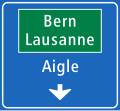

![4.45 Указатель для определенных типов транспортных средств (здесь: грузовые автомобили)[примечание 24]](http://upload.wikimedia.org/wikipedia/commons/thumb/b/be/CH-Hinweissignal-Wegweiser_f%C3%BCr_bestimmte_Fahrzeugarten_%28Beispiel_Lastwagen%29.svg/120px-CH-Hinweissignal-Wegweiser_f%C3%BCr_bestimmte_Fahrzeugarten_%28Beispiel_Lastwagen%29.svg.png)
![4.46 Указатель на парковочное место[примечание 25]](http://upload.wikimedia.org/wikipedia/commons/thumb/5/52/CH-Hinweissignal-Wegweiser_%C2%ABParkplatz%C2%BB.svg/120px-CH-Hinweissignal-Wegweiser_%C2%ABParkplatz%C2%BB.svg.png)













